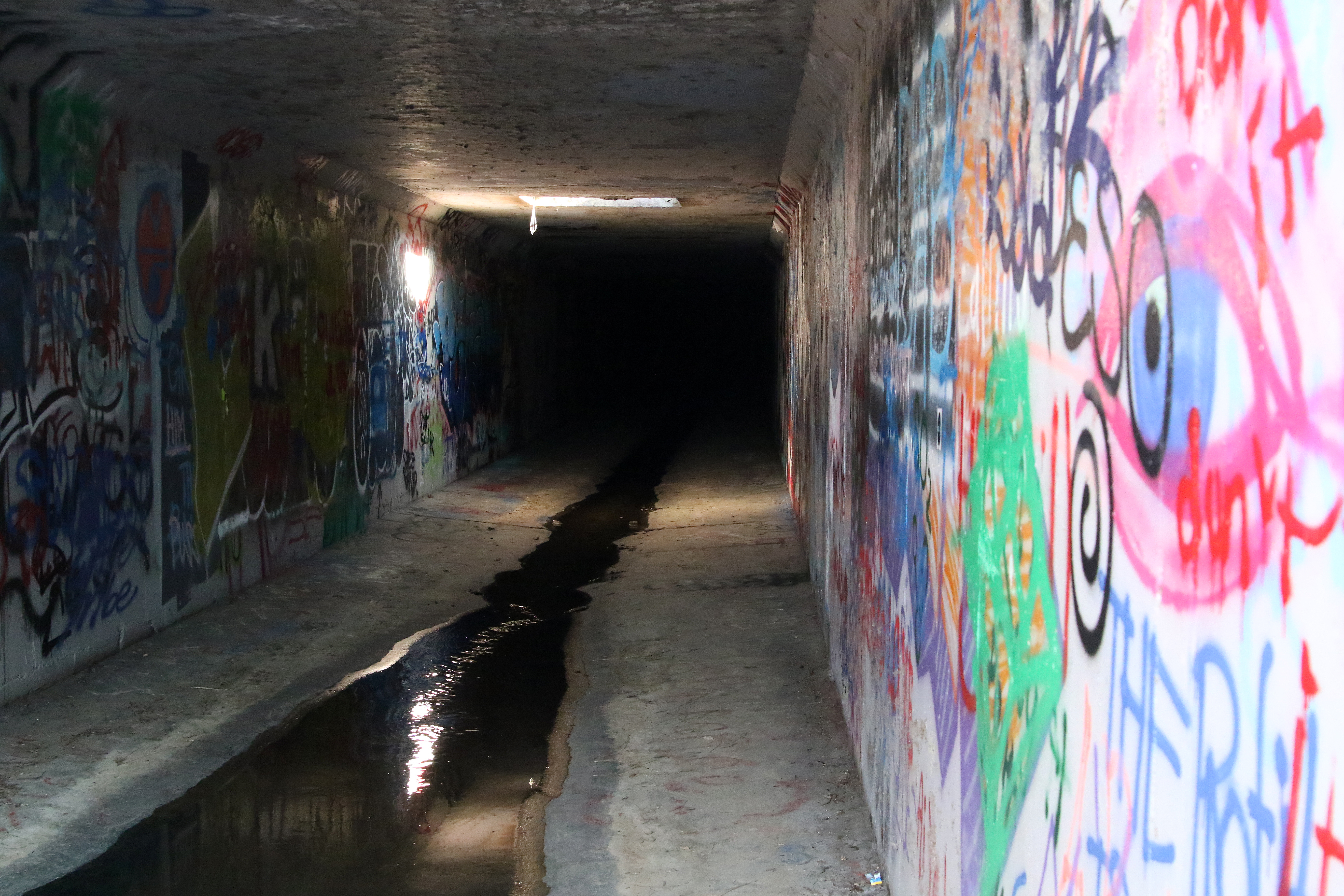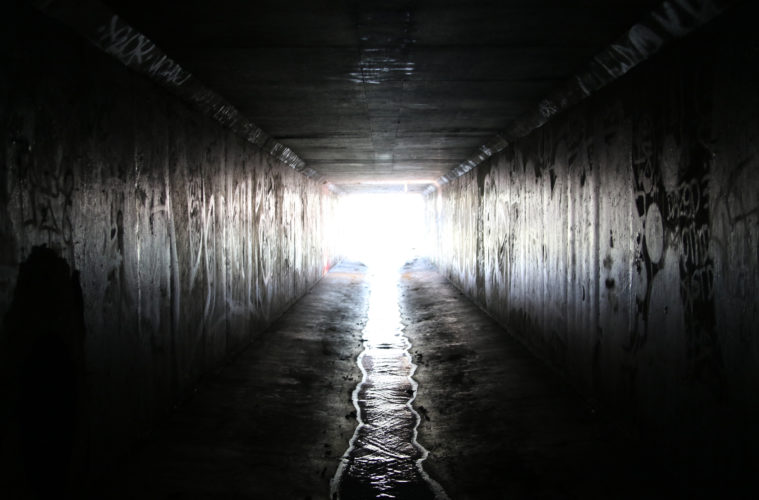The internet is an interesting portal when it comes to myths, legends and arcane experiences. Thanks to its capacity to make anything available to anybody, the story of the UCI underground tunnels is no longer relegated to the campus of UC Irvine, where tales of the mysterious tunnels have been the source of intrigue for decades. A simple Google search turns up scores of hits about the legendary tunnels. These hits range from Reddit threads, to blog posts, to Youtube video documentaries and testimonials, to articles from legitimate publications such as the Orange County Register and Los Angeles Times.
 Given the immense resources available thanks to the Information Age, it would seem that myths and legends could be easily debunked and demystified. Surprisingly, it took this reporter’s own investigative prowess to determine the absolute solution to the mystery. The words that follow may shock readers, and there is always the possibility that people simply don’t want to know the true answers to their favorite mysteries – after all, on the grandest of scales, mysteries are what enable governments and religions to thrive. Well, gentle reader, if you do not wish to know the secret behind the origin of UCI’s underground tunnels, Irvine Weekly advises you to not read the final paragraph of this expose. You have been warned!
Given the immense resources available thanks to the Information Age, it would seem that myths and legends could be easily debunked and demystified. Surprisingly, it took this reporter’s own investigative prowess to determine the absolute solution to the mystery. The words that follow may shock readers, and there is always the possibility that people simply don’t want to know the true answers to their favorite mysteries – after all, on the grandest of scales, mysteries are what enable governments and religions to thrive. Well, gentle reader, if you do not wish to know the secret behind the origin of UCI’s underground tunnels, Irvine Weekly advises you to not read the final paragraph of this expose. You have been warned!
Since information regarding mysterious legends such as the UCI tunnels is so widespread, the nature of the information can be downright wacky. Among the various responses to the various Reddit inquiries about the origin of the tunnels, our favorite had to come from a user called AmericanSuit, who provides this nugget of wisdom: “It’s where the gene splicing experiments were conducted during the Reagan administration. Now the thousands of human/anteater hybrids live there, plotting to overthrow the aboveground peoples for whom they toil.”
Another Reddit respondent, who goes by the handle SignalLock, offers a much less fantastic explanation: “I was taken on an official tour of the tunnels in the late 90’s. The tunnels are service tunnels under the outer ring. They contain steam pipes and internet tubes traveling to buildings around campus.” The user, who is evidently a UCI alumnus, continues, “It was an uninterrupted ring all the way around campus, with branches peeling off to various buildings. The tunnel goes through the center of outer ring bridges, so it becomes a little more cramped each time you cross a bridge. Entrances to the tunnels were all behind locked doors inside buildings.”
 This particular response is supported by an Orange County Register article entitled “Urban Legends of UCI.” In the article, Anna Iliff writes, “The tunnels house heating and cooling pipes and electric, phone and data wiring. Underground tunnel systems are not unusual. Many campuses, including UCLA and Stanford University, have their own subterranean passageways that are generally operated by facilities management.”
This particular response is supported by an Orange County Register article entitled “Urban Legends of UCI.” In the article, Anna Iliff writes, “The tunnels house heating and cooling pipes and electric, phone and data wiring. Underground tunnel systems are not unusual. Many campuses, including UCLA and Stanford University, have their own subterranean passageways that are generally operated by facilities management.”
After this discovery, we’d pretty much be able to wrap up the investigation … except for the fact that we discovered this was not the UCI underground tunnel system we were looking for! Apparently, in addition to these service tunnels, which are accessible by UCI personnel, there is another system of tunnels that are not under lock and key and do not provide access to plumbing and electrical conduits. In an L.A. Times article titled “Shocking Tales of the Underground,” Tony Barboza reveals that these alternate tunnels are “[r]umored to have been built as escape routes for professors and as access points for National Guardsmen during student protests in the 1960s.”
The article goes on to describe how UCI and other U.S. universities with similarly legendary infrastructure “are sealing off tunnels that have drawn curious students and urban explorers, played host to hazing rituals and pranks and sparked urban legends, such as the one about mutant radioactive rabbits.” Though the Times article, which was published in 2007, went on to point out the extensive steps the university was taking to prevent students from accessing the tunnels – including “spending up to $300,000 on motion sensors, alarms, closed-circuit cameras and card readers” – they are apparently still as easy to access as a neighborhood coffee shop.
The evidence of their accessibility is easy to find, as there are Youtube videos that have been posted within the last couple of years depicting the exploration of the tunnels. Obviously, any legendary subject that is germane to one’s school is going to have students wanting to explore it for themselves. On these videos, no motion sensors, cameras, alarms or deterrents of any kind are evident, which would seem to beg the question, “Where did that ‘up to $300,000’ go?”
After sifting through these videos – which depict the expeditions but do not seem to reveal any evidence as to the tunnels’ origin – I determined that I ought to do a little exploring of my own.
 After researching various posts about how to locate at least one of the tunnels’ entrances, I discovered that would-be tunnel-seekers should start their adventure at the intersection of Campus Dr. and University Dr. On the west side of University Dr., between the street and the San Diego Creek, resides the Mountains to the Sea Trail & Bikeway. If one were to start at Campus Dr. and head south along this path for about .2 miles – just a bit shy of reaching Mesa Rd. – one could see a large concrete opening about five feet to the right of the path.
After researching various posts about how to locate at least one of the tunnels’ entrances, I discovered that would-be tunnel-seekers should start their adventure at the intersection of Campus Dr. and University Dr. On the west side of University Dr., between the street and the San Diego Creek, resides the Mountains to the Sea Trail & Bikeway. If one were to start at Campus Dr. and head south along this path for about .2 miles – just a bit shy of reaching Mesa Rd. – one could see a large concrete opening about five feet to the right of the path.
The opening is not barred in any way, although Irvine Weekly advises against entering for safety reasons and for the reason that there is a sign posted nearby which indicates that venturing beyond the path constitutes trespass. A cursory glance, however, reveals that this is, indeed, an entrance to the legendary tunnels; furthermore, the tunnels have been recently traversed as is evident from at least one rendering of Pennywise the Dancing Clown, the antagonist from the recent horror film adaptation of Stephen King’s novel “It.”
The discovery of the tunnels’ location was quite satisfying, but let’s face it, the real mystery is their original purpose. Were they, indeed, a means of escape for faculty under siege by radical students? Was there truth to the rumor about radioactive rabbits, or was it really meant to house gene-splicing experiments during the Reagan era? Common sense dictated that there was only one way to find out, so I placed a phone call to the Irvine Public Works Department, which most certainly had comprehensive knowledge about the tunnels. For a moment, the mystery continued, as it was not clear whether or not the tunnels were within the jurisdiction of the city or the school. But after describing the tunnels’ appearance and location to the friendly public works operative, they located it on their city map. They said the tunnel is a standard box culvert storm drain, and they’d never heard of the legends.
Advertising disclosure: We may receive compensation for some of the links in our stories. Thank you for supporting Irvine Weekly and our advertisers.

